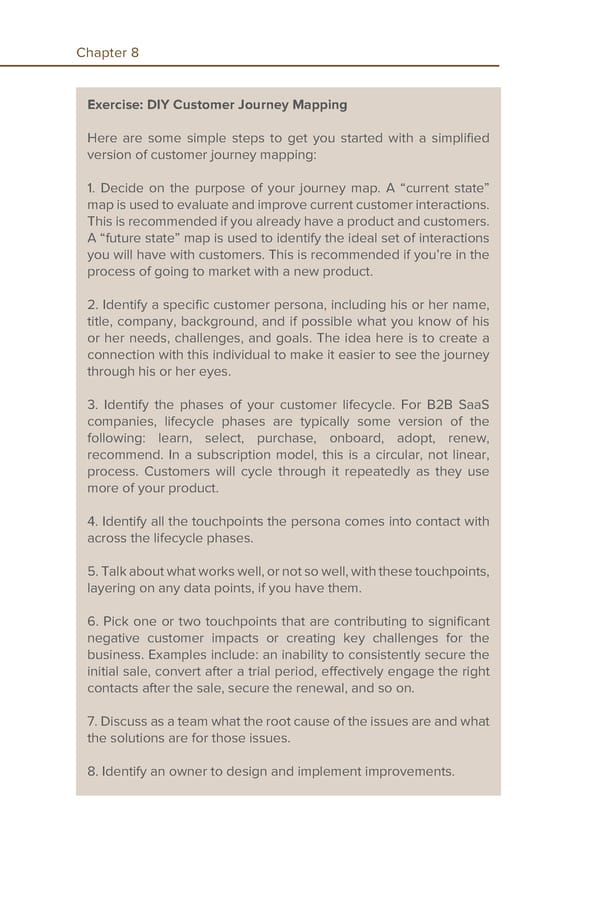Chapter 8 Exercise: DIY Customer Journey Mapping Here are some simple steps to get you started with a simplified version of customer journey mapping: 1. Decide on the purpose of your journey map. A “current state” map is used to evaluate and improve current customer interactions. This is recommended if you already have a product and customers. A “future state” map is used to identify the ideal set of interactions you will have with customers. This is recommended if you’re in the process of going to market with a new product. 2. Identify a specific customer persona, including his or her name, title, company, background, and if possible what you know of his or her needs, challenges, and goals. The idea here is to create a connection with this individual to make it easier to see the journey through his or her eyes. 3. Identify the phases of your customer lifecycle. For B2B SaaS companies, lifecycle phases are typically some version of the following: learn, select, purchase, onboard, adopt, renew, recommend. In a subscription model, this is a circular, not linear, process. Customers will cycle through it repeatedly as they use more of your product. 4. Identify all the touchpoints the persona comes into contact with across the lifecycle phases. 5. Talk about what works well, or not so well, with these touchpoints, layering on any data points, if you have them. 6. Pick one or two touchpoints that are contributing to significant negative customer impacts or creating key challenges for the business. Examples include: an inability to consistently secure the initial sale, convert after a trial period, effectively engage the right contacts after the sale, secure the renewal, and so on. 7. Discuss as a team what the root cause of the issues are and what the solutions are for those issues. 8. Identify an owner to design and implement improvements.
 Customer Experience and Success Page 9 Page 11
Customer Experience and Success Page 9 Page 11